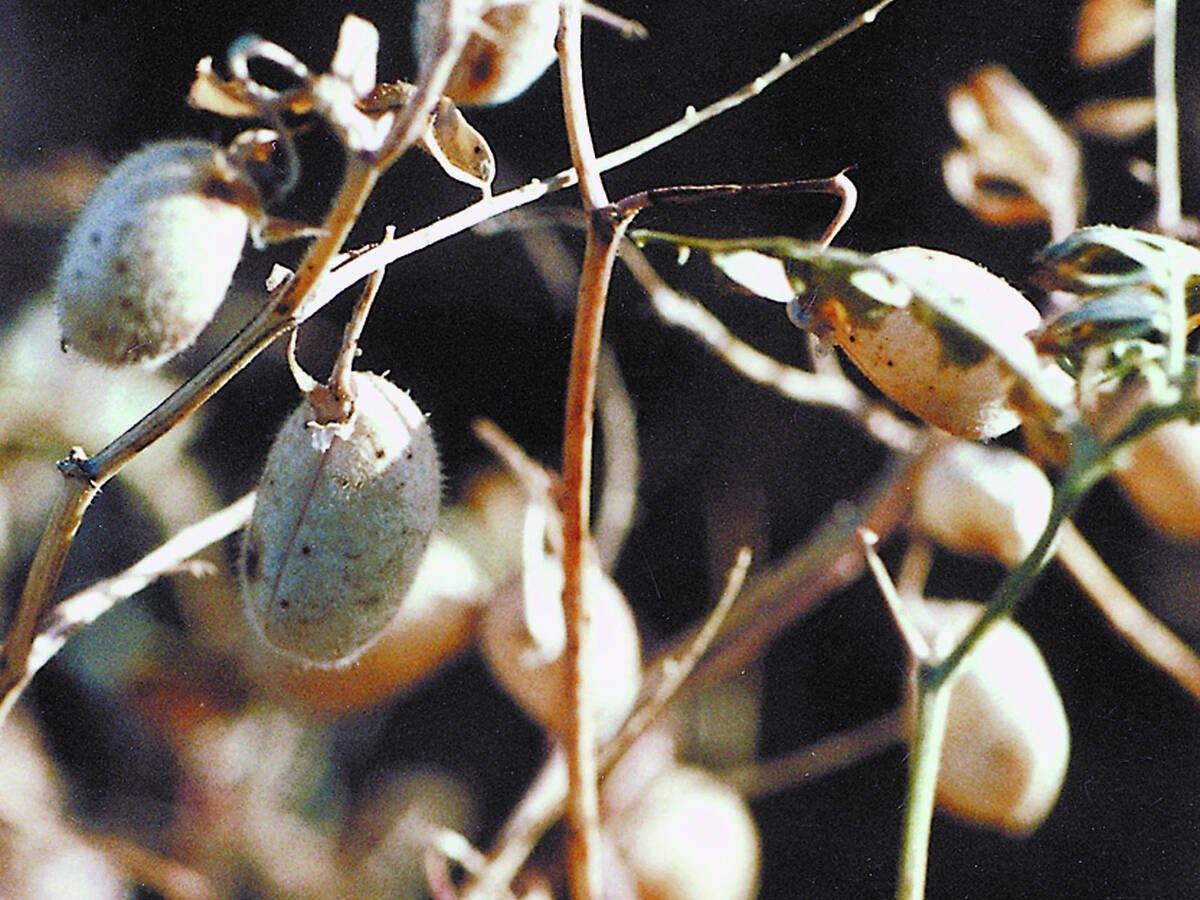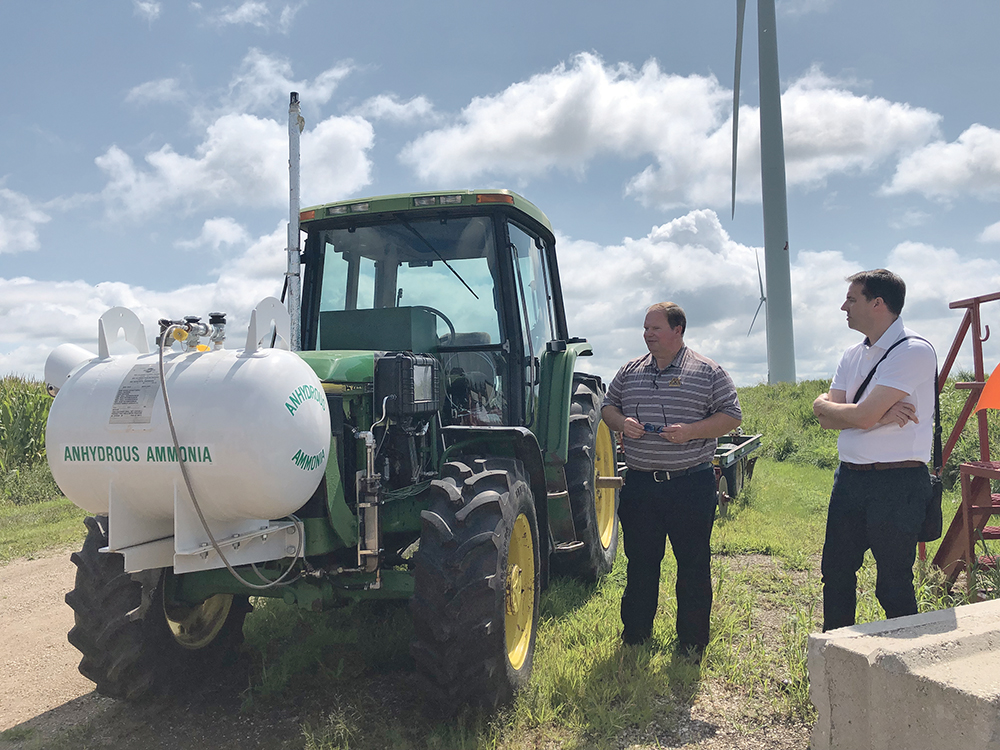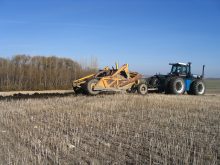MORRIS, Minn. — Seamus Kane is one of those scientists who looks like a scientist.
He has glasses, tilts his head to the side when he speaks and has the habit of looking off into the middle distance rather than making eye contact with a listener.
Kane could be an introvert and like many introverts, he’s more outgoing and confident when sharing his expertise in a specific subject.
In Kane’s case, that subject is ammonia.
For much of the last six years, Kane has tried to answer one question: can ammonia replace diesel and other fossil fuels on North American farms?
Read Also

Chickpea harvest forecasts see big disparity
Chuck Penner is forecasting 345,000 tonnes of chickpeas but a trader thinks the real number is closer to 500,000 tonnes.
That is, can ammonia be used to power tractors, farm machinery, grain dryers and other equipment?
After many experiments, he hasn’t reached a definite yes or no.
The answer is “maybe” or “probably,” depending on the use.
“Ammonia is very stable. Very hard to burn. Compared to gasoline, it’s not really an ideal fuel,” said Kane, who has a PhD in mechanical engineering from the University of Minnesota and is now a postdoctoral researcher at the university’s Minneapolis campus.
“It doesn’t burn very quickly. It’s not very reactive or energetic during combustion.”
Kane was a featured speaker at the Midwest Farm Energy Conference, held mid-June at the University of Minnesota’s West Central Research and Outreach Centre in Morris.
During his presentation, Kane explained that ammonia is far from a perfect fuel for a number of reasons. However, it could help the agriculture industry with a massive problem.
Governments and companies are putting pressure on farmers to produce food with fewer greenhouse gas emissions and ammonia could be part of the solution.
“The reason we’re looking at ammonia… there is no carbon involved in its production,” said Kane, who is part of the Thomas E. Murphy engine research lab at the University of Minnesota. “The molecule doesn’t contain any carbon. So, when burned it only produces water.”
Kane’s research is not hypothetical because interest in ammonia (NH3) is booming.
Global energy and fertilizer companies, such as Yara, Nutrien, and Exxon Mobil, are investing hundreds of millions in new or proposed plants, which will drastically reduce or eliminate the carbon dioxide emissions from ammonia production.
One technology is known as “blue” ammonia, where CO2 is captured and stored underground.
Another is “green” ammonia, where ammonia is produced from renewable energy like wind or solar.
The sales pitch goes something like this.
If the industry shifts to blue or green ammonia and if producers use it as fuel and fertilizer on their farms, the agriculture sector could drastically cut the greenhouse gas emissions from crop production.
“Green ammonia, produced using renewable energy, would enable the production of carbon-free fertilizer and is a promising zero-emission fuel…,” Yara said in news release from last summer.
Many scientists and engineers are focused on ammonia as a fuel for shipping. But others, like Kane, believe NH3 makes sense for agriculture.
“Farmers already have ammonia around. You’re never too far from a co-op, where you can acquire ammonia,” he said. “The availability, mixed with the ecological benefit, is why ammonia seems so attractive…. Ammonia is a really versatile fuel to use on farms.”
Ammonia may be versatile but it has limitations. As a fuel for tractors and other engines, NH3 “is very sluggish,” Kane said.
“It’s very hard to get air and ammonia to come together,” he said, noting that NH3 burns five to 10 times slower than gasoline or diesel.
“If you bring the ammonia into an engine, you end with half of it burning, or a quarter of it burning, before it is pushed out of the exhaust cylinder.”
To resolve that combustion issue, engineers have had success by mixing NH3 with diesel or another hydrocarbon
Kane followed that example and built a tractor that runs on a fuel blend of ammonia and diesel in a garage at the university’s site in Morris.
However, he took the fuel blend concept a step further.
Kane mixed hydrogen into the ammonia so it would combust more like a fossil fuel.
“We can bring it from this sluggish (state) to something like natural gas.”
But carrying three tanks on a tractor — for diesel, ammonia and hydrogen — is not practical.
However, the ammonia molecule can be cracked to get at the hydrogen in the molecule.
Kane and Will Northrop, director of the Thomas E. Murphy engine laboratory, devised a way to convert some of the ammonia to hydrogen, within the tractor’s engine.
They developed a catalytic converter that uses heat from the engine’s exhaust to spark the chemical process that converts ammonia to hydrogen.
They don’t crack all of the ammonia. The system produces enough hydrogen to improve combustion of the NH3.
The engineers first tested the tractor, a John Deere 6400, a few years ago in Morris. The tractor has a white tank mounted on the front, which contains the anhydrous ammonia.
“We’ve taken a diesel engine and we’ve been able to run this diesel engine… with 50 percent of the power… coming from ammonia fuel,” Kane said. “The tractor performed with the same throttle response. The same power. The same speed.”
The performance was encouraging because the ammonia reduced the CO2 emissions from the tractor.
“Essentially, you’re cutting 50 percent of the carbon emissions from the engine, so that’s really a huge advantage,” Northrop told NPR. “It’s something that you can’t really do with any other technology like engine efficiency improvements or other interventions.”
The tractor performs similarly to a diesel-powered tractor, but there are issues. When idling, for instance, the ammonia combustion is inefficient.
“We end up with a lot of unburned ammonia,” Kane said.
As well, part of the exhaust becomes nitrous oxide, a highly potent greenhouse gas.
As a result, the environmental benefits of using ammonia as a fuel are lost.
“The big takeaway… idle is not a good condition to run ammonia combustion,” Kane said.
There’s also the matter of safety.
Ammonia vapourizes quickly and exposure to high concentrations can cause immediate burning of the eyes, nose and throat and quickly damage lungs.
“If there is a pool of gasoline sitting on the floor of this room, right now, I can guarantee you that nobody in this room would be adversely affected…. No one would be harmed,” Kane said inside a conference room at the West Central Research and Outreach Centre in Morris.
“If we had a pool of anhydrous ammonia… we would all be in big trouble.”
There are technical obstacles with ammonia as a fuel source for tractors, but Kane plans to continue his research.
One of the options could be refitting a diesel engine so it uses ammonia more efficiently.
“We’ve been in talks with a number of different companies, who are taking orders to take existing diesel machinery and convert it to natural gas-ammonia, or pure ammonia.”
Kane has also studied another on-farm use for ammonia — drying grain.
Unlike combustion engines, ammonia burns more readily in a grain dryer because the burn lasts a longer time.
“We have the benefit of a longer duration for a burn…. In the combustor cans of a grain dryer, we have almost complete combustion. There is no ammonia coming out of the grain dryer,” Kane said. “By moving from engine to combustor, we mitigate a lot of issues with ammonia’s combustion.”
In the last couple of years, Kane has conducted experiments on ammonia as a fuel source for grain drying. He will soon publish papers on the research.
In short, he found that grain drying could be a good fit for ammonia and an excellent way to cut greenhouse gas emissions in agriculture.
“By not using propane to dry your grain, you end up saving all the CO2 emissions,” he said.
“By going through that big loop of generating the (green) ammonia, storing it and burning it (and) not using propane to dry your grain, you end up saving all the CO2 emissions (from fossil fuels).”
















